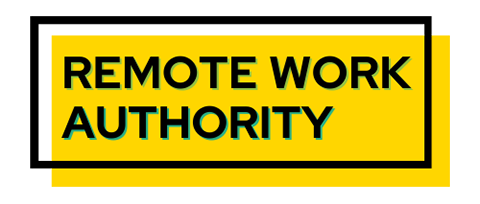Both employees and employers benefit from remote teams, but managing them can be challenging, often due to time and cultural differences. Smart managers use the right communication tools, focus on results, not hours worked, and respect differences.
The rise of technology has made remote work a viable option for many organizations. However, managing geographically-distributed teams comes with its own set of challenges. Communication, collaboration, and coordination become more complicated when team members work from different locations.
While the pandemic has forced many companies to adopt remote work, it has also highlighted the importance of building strong virtual teams that can function effectively across different cultures and countries.
This article explores the key challenges of managing remote employees and provides strategies to overcome them.
Table of Contents
What Are The Benefits of Remote Teams?
For Managers
Remote teams offer several benefits for managers, including increased flexibility and access to a broader talent pool. With remote teams, managers can hire the best candidates regardless of location and save on office space costs.
“Well-led remote teams are spectacularly efficient. When a team is coached to document their progress well, they can iterate on work in an “around the sun” manner, making progress while others teams are mired in meetings. Plus, globally distributed teams bring perspectives from an array of cultures, which hedges against groupthink.”
Darren Murph – VP Workplace Design & Remote Work
Additionally, remote work often leads to increased productivity and higher employee satisfaction. Managers also benefit from the ability to easily track and monitor employee performance and progress using digital tools and software.

For Team Members
Remote team members have the advantages of a better work-life balance, increased flexibility, and the ability to work from anywhere. Remote work eliminates long commutes and typically allows team members to design their schedules around their personal lives.
This often leads to improved mental health and job satisfaction. Additionally, remote work opens up opportunities for people who may not be able to work in a traditional office environment due to disability, location, or other factors.
What Are The Disadvantages Of Geographically-Distributed Teams?
For Managers
Managing geographically-dispersed teams presents several disadvantages for managers, including communication challenges, cultural differences, and difficulties in building trust among team members. Remote work can lead to feelings of isolation and lack of connection among team members, negatively impacting team morale and productivity.
Managing remote teams requires specialized skills and tools that may not be readily available or easily accessible for managers who are used to working in traditional office settings. Managing remote teams also increases the risk of data security breaches and cyber-attacks, requiring additional measures to ensure data protection.
For Team Members
Geographically dispersed teams can cause problems for team members, including feelings of isolation and lack of connection with colleagues, difficulties establishing effective communication, and challenges in managing work-life boundaries. Remote work can blur the lines between work and personal life, leading to longer work hours and increased stress levels. Remote work may also require team members to work across different time zones, disrupting their sleep patterns and making it difficult to maintain a healthy work-life balance.
What Happens When Teams Are Geographically Distributed?
When teams are geographically distributed, they are physically separated and may rely on technology to communicate and collaborate. This can make it hard to get the team together and build trust among team members – one of the main aims of a meeting.

When remote work may require teams to work across different time zones, meetings can disrupt their sleep patterns and make maintaining a healthy work-life balance difficult.
Why? When it is 9 am in New York, it is 6 am in California. However, it is 6 pm in Berlin, 11 pm in Bangkok, Thailand, midnight in Bali, and 2 am in Sydney, Australia. Setting a meeting time when some participants are sleeping or half awake is not the best scenario. A manager needs to be very aware of the location of team members before scheduling a time for the whole team to convene.
However, geographically dispersed teams are highly effective and productive with the right strategies and tools. Leaders might need to split their meetings into multiple sessions.
What Are The Common Challenges When Managing Geographically-Distributed Teams?
Managing distributed development teams presents several challenges, including communication barriers, cultural differences, lack of trust and accountability, and difficulties coordinating work across different time zones. Other challenges include:
- Language and accents. Even if everyone speaks a common language, accents from non-native speakers may be more difficult to understand.
- Body language, gestures, tone: Even on video, non-verbal communication does not always translate well.
- Attitudes about gender and power: Cultural beliefs may impact how team members relate to other team managers and bosses.
- Personalities and preferences: Preferences about deadlines, communication styles, approach to feedback, conflict management, management styles, and relationship building may vary.
These challenges can lead to project completion delays, reduced work quality, and decreased team morale.
Cultural differences in the global workplace have been the subject of many studies. Recent work published in the Harvard Business Review stresses that cross-cultural communication and diversity awareness training should be implemented where international teams will work closely together. Even as individuals try to find common ground, teams benefit from the creativity of those from different cultures.
Managing remote development teams requires specialized skills and tools to ensure effective collaboration and coordination, such as project management software, virtual meeting platforms, and communication protocols. However, the cultural sensitivity of the manager and their ability to bridge differences is the primary key to success.

Onboarding Remote Team Members
While in-person interactions are ideal, remote team members can still connect with their colleagues through regular team meetings and video conferences. Managers should be aware of the limitations of virtual communication and try to use body language and other non-verbal cues to enhance their interactions.
Onboarding remote team members should also be a priority to ensure they feel integrated into the team from the outset. Setting clear goals and expectations is important to keep teams focused and aligned, and virtual check-ins can replace watercooler moments throughout the workday.
Finally, managing a diverse team across different countries requires cultural awareness and sensitivity to ensure everyone feels valued and included, regardless of location.
What Are The Best Practices For Managing Globally Disparate Teams
Managing globally disparate teams effectively requires the use of best practices:
- Establish clear communication protocols
- Promote cultural awareness and sensitivity
- Foster a sense of team cohesion
- Leverage technology to facilitate collaboration and coordination. This includes using video conferencing, instant messaging, and project management software to keep team members connected and informed.
Further Information And Advice About The Challenges Of Managing Remote Employees
Managing geographically distributed employees can be challenging, but it is possible to overcome these challenges with suitable strategies and tools. In the absence of face-to-face communication, video conferencing and instant messaging tools such as Zoom, Slack, and Microsoft Teams can facilitate team communication and workflow.


